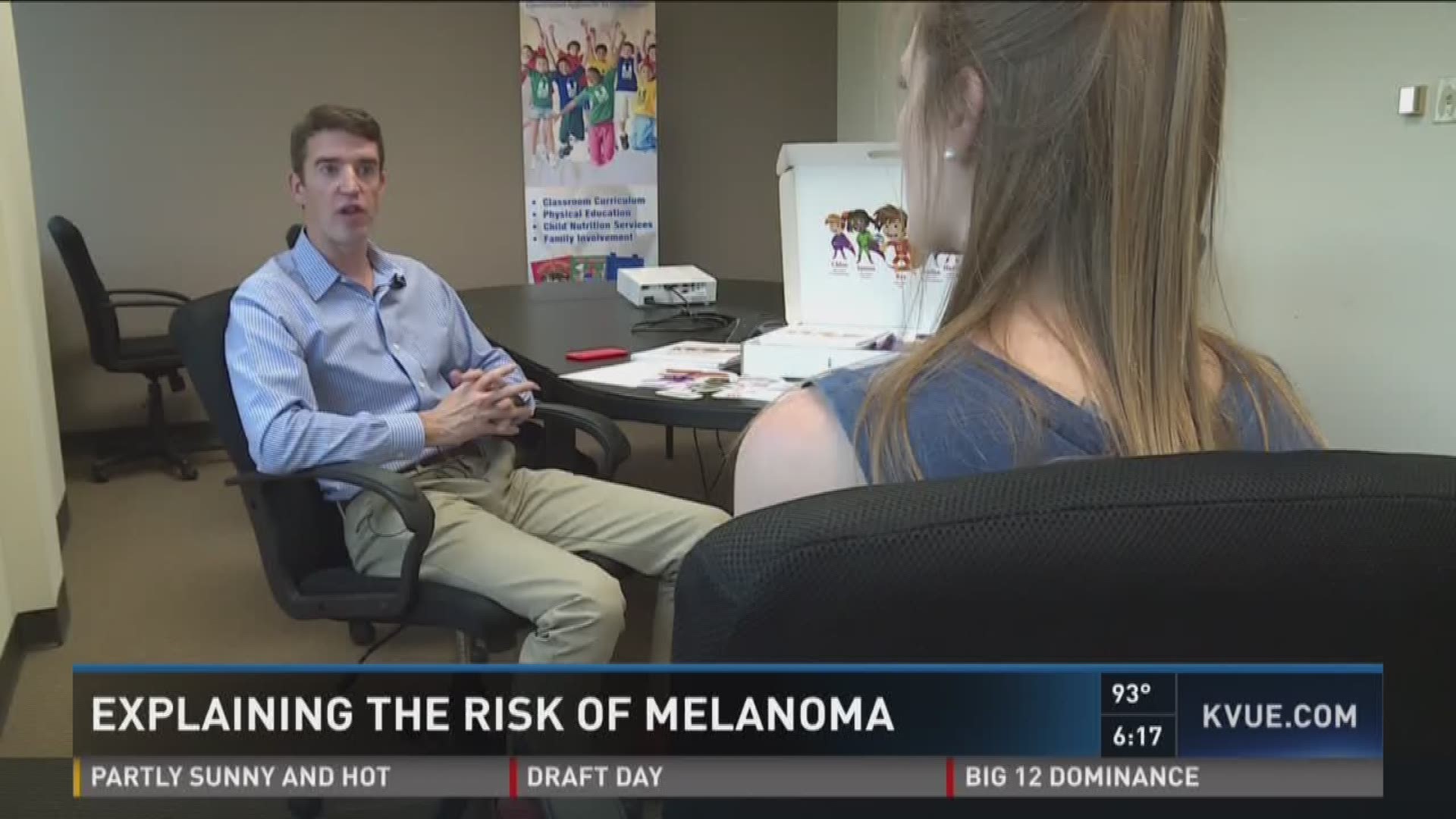Even one sunburn as a child, doubles the risk of melanoma, the most deadly type of skin cancer.
A new program in some Texas schools – including Round Rock ISD --- wants to prevent that from happening.
Chris Sawicki takes his grandson Thomas outside to play almost every day.
"I always make sure he wears his hat because he's very fair skinned,” said Sawicki.
Sawicki said they also load on the sunscreen.
"You don't want to be one of those later on who gets skin cancer you can't come back from,” said Sawicki.
The non-profit CATCH, or Coordinated Approach to Child Health, created the program Sunbeatables as part of their partnership with MD Anderson.
5 super heroes teach children about sun safety. They teach things like wearing sunscreen, hats and protective clothing.
"Skin cancer is very preventable, there are things that are well known that you can do,” said Executive Director Duncan Van Dusen.
Ken Davis agrees, and wishes he would have had the knowledge as a child.
During a routine checkup last year, doctors diagnosed him with melanoma.
"I was out of action doing the things I really like to do, running, and walking the dog and playing tennis for about 12 weeks,” said Davis.
Doctors removed skin from his nose and arm.
“The foundation for this was years ago, I've been very careful for the last 10 years,” said Davis.
Now he wears sunscreen, hats, and long sleeves.
"The cells don't forget that 50 years ago, 60 years ago, you were out playing in the sun without any protection what so ever,” said Davis.
"Burns in childhood, particularly early childhood has increased your risk to develop skin cancer significantly higher,” said Van Dusen.
Some preschools already use the program, but now Kindergarten and 1st graders in Round Rock schools will learn the skills.
HOW TO BE SUN SAFE:
- Cover up by wearing wide-brimmed hats, sunglasses and protective clothing.
- Use SPF 30 broad-spectrum sunscreen and lip balm and reapply regularly.
- Stay in the shade.
- Be super-protected or avoid sun exposure when shadows are shorter (between 10 a.m. and 4 p.m.)
WHAT TO LOOK FOR:
According to the American Cancer Society, Skin Cancers show up in different shapes and sizes. Look for an area that has recently appeared or changed.
Basal and Squamous Cell Cancers are usually found in areas that get a lot of sun like the head, neck and arms.
Basal Cell Cancers may look:
- Flat, firm, pale or yellow similar to a scar
- Raised reddish patches that might be itchy
- Small, pink or red, translucent, shiny, pearly bumps, which might have blue, brown, or black areas
- Pink growths with raised edges and a lower area in their center, which might contain abnormal blood vessels
- Open sores (which may have oozing or crusted areas) that don’t heal, or that heal and then come back
Squamous Cell Carcinomas can look:
- Rough or scaly red patches, which might crust or bleed
- Raised growths or lumps, sometimes with a lower area in the center
- Open sores (which may have oozing or crusted areas) that don’t heal, or that heal and then come back
- Wart-like growths
Possible signs and symptoms of melanoma:
- A is for Asymmetry: One half of a mole or birthmark does not match the other.
- B is for Border: The edges are irregular, ragged, notched, or blurred.
- C is for Color: The color is not the same all over and may include shades of brown or black, or sometimes with patches of pink, red, white, or blue.
- D is for Diameter: The spot is larger than 6 millimeters across (about ¼ inch – the size of a pencil eraser), although melanomas can sometimes be smaller than this.
- E is for Evolving: The mole is changing in size, shape, or color.
Some melanomas do not fit the rules described above, so it’s important to tell your doctor about any changes or new spots on the skin, or growths that look different from the rest of your moles.
Other warning signs are:
- A sore that does not heal
- Spread of pigment from the border of a spot into surrounding skin
- Redness or a new swelling beyond the border
- Change in sensation – itchiness, tenderness, or pain
- Change in the surface of a mole – scaliness, oozing, bleeding, or the appearance of a bump or nodule

